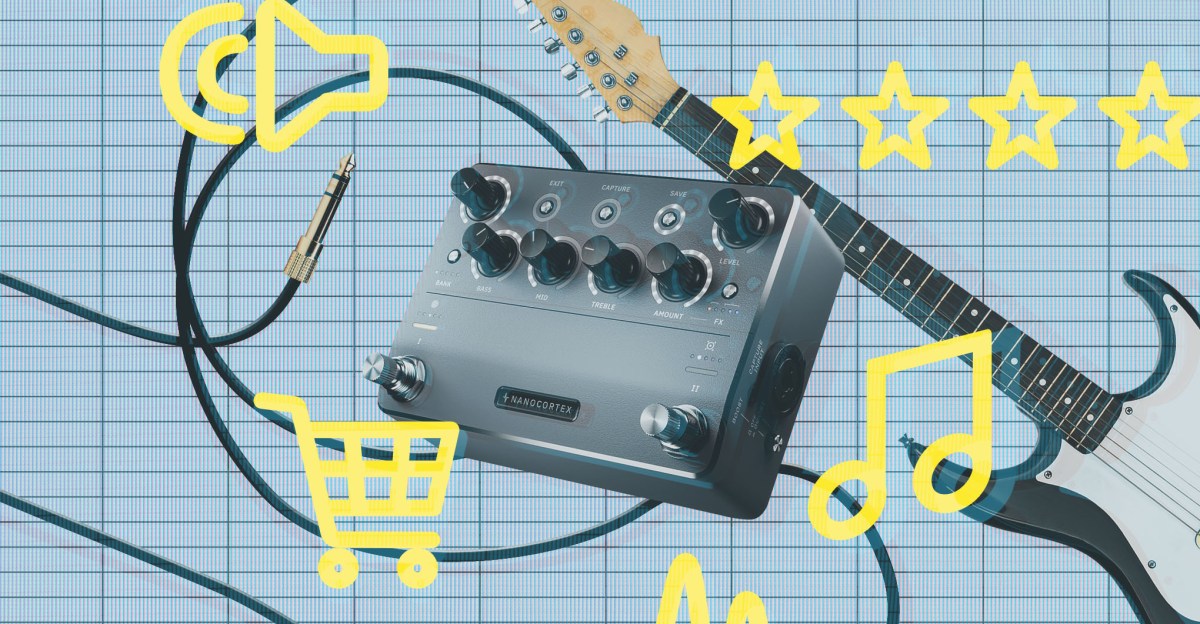The Science Of Sound: How Guitar Modeling Companies Capture Rare Vintage Tones

Welcome to your ultimate source for breaking news, trending updates, and in-depth stories from around the world. Whether it's politics, technology, entertainment, sports, or lifestyle, we bring you real-time updates that keep you informed and ahead of the curve.
Our team works tirelessly to ensure you never miss a moment. From the latest developments in global events to the most talked-about topics on social media, our news platform is designed to deliver accurate and timely information, all in one place.
Stay in the know and join thousands of readers who trust us for reliable, up-to-date content. Explore our expertly curated articles and dive deeper into the stories that matter to you. Visit NewsOneSMADCSTDO now and be part of the conversation. Don't miss out on the headlines that shape our world!
Table of Contents
The Science of Sound: How Guitar Modeling Companies Capture Rare Vintage Tones
The pursuit of the perfect guitar tone has driven musicians for decades. That warm, shimmering clean tone of a '59 Les Paul, the snarling bite of a cranked Plexi, these legendary sounds are highly sought after – and often come with a hefty price tag. But thanks to advancements in digital audio technology, guitar modeling companies are increasingly able to capture and reproduce these rare vintage tones with stunning accuracy, making them accessible to a wider range of players. This article delves into the science and artistry behind this remarkable feat.
Deconstructing the Legend: Analyzing Vintage Amps and Guitars
The quest begins with the meticulous analysis of iconic amplifiers and guitars. Companies like Neural DSP, Positive Grid, and IK Multimedia employ a multi-faceted approach. This involves:
-
Impulse Response (IR) Capture: This technique involves recording the response of a vintage amplifier or cabinet to a specific input signal. High-quality microphones, precise placement, and anechoic chambers are crucial for capturing a pure, uncolored sound. The resulting IR file contains the unique sonic fingerprint of the equipment, including its frequency response, transient characteristics, and harmonic content.
-
Component-Level Modeling: This goes beyond simply capturing the output. Engineers painstakingly analyze the schematics and components of vintage amplifiers, meticulously recreating the circuitry using advanced modeling techniques. This involves understanding the interaction of tubes, transformers, capacitors, and resistors – all crucial elements that contribute to the unique character of a specific amplifier.
-
Physical Modeling: This cutting-edge technique attempts to simulate the actual physical behavior of the instrument and amplifier components. It doesn't just mimic the sound; it aims to recreate the underlying physics, leading to a highly realistic and dynamic response. This is particularly crucial for accurately modeling the complex interactions within a guitar's pickups and the resonant properties of its body.
Beyond the Hardware: Sophisticated Algorithms and Software
The captured data and modeled components are then incorporated into sophisticated algorithms and software. These algorithms process the input signal, applying the characteristics of the modeled equipment to create the final output. The level of detail is extraordinary, considering factors like:
-
Tube Saturation: The characteristic distortion and harmonic richness produced by vacuum tubes are carefully modeled, often involving complex mathematical equations that accurately simulate the non-linear behavior of these components.
-
Cabinet Resonance: The size, shape, and material of the amplifier cabinet significantly influence the overall sound. Modeling companies meticulously reproduce these characteristics, ensuring the low-end thump, mid-range punch, and high-end sparkle are faithfully replicated.
-
Speaker Cone Behavior: The subtle nuances of how a speaker cone moves and interacts with the air are also incorporated into the models, further enhancing the realism and accuracy of the simulated sound.
The Future of Tone: Accessibility and Innovation
The advancements in guitar modeling technology are democratizing access to legendary sounds. No longer are musicians restricted by budget or geographical limitations to obtain these coveted tones. This accessibility fosters creativity and innovation, allowing players to explore a wider range of sonic possibilities.
Furthermore, the ongoing research and development in this field promise even more realistic and versatile modeling in the future. Expect even greater accuracy in recreating vintage gear and the emergence of new, innovative modeling techniques that push the boundaries of sonic exploration. The science of sound continues to evolve, and the pursuit of the perfect guitar tone remains a vibrant and exciting journey.

Thank you for visiting our website, your trusted source for the latest updates and in-depth coverage on The Science Of Sound: How Guitar Modeling Companies Capture Rare Vintage Tones. We're committed to keeping you informed with timely and accurate information to meet your curiosity and needs.
If you have any questions, suggestions, or feedback, we'd love to hear from you. Your insights are valuable to us and help us improve to serve you better. Feel free to reach out through our contact page.
Don't forget to bookmark our website and check back regularly for the latest headlines and trending topics. See you next time, and thank you for being part of our growing community!
Featured Posts
-
 Five Brentford Changes Arsenals Updated Lineup Revealed
Apr 12, 2025
Five Brentford Changes Arsenals Updated Lineup Revealed
Apr 12, 2025 -
 Bitcoin To Hit 250 K Cardano Founder Links Price Surge To Stablecoins And Mag 7
Apr 12, 2025
Bitcoin To Hit 250 K Cardano Founder Links Price Surge To Stablecoins And Mag 7
Apr 12, 2025 -
 Is A New Valve Vr Headset Coming Soon Recent Leak Hints Yes
Apr 12, 2025
Is A New Valve Vr Headset Coming Soon Recent Leak Hints Yes
Apr 12, 2025 -
 Authorities Provide Major Update In Loose Boa Constrictor Investigation
Apr 12, 2025
Authorities Provide Major Update In Loose Boa Constrictor Investigation
Apr 12, 2025 -
 Marathon Closed Alpha Everything You Need To Know About The Release And Sign Up
Apr 12, 2025
Marathon Closed Alpha Everything You Need To Know About The Release And Sign Up
Apr 12, 2025
